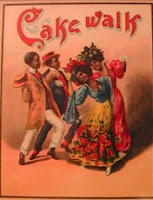At the time that composers were mainstreaming Ragtime music, Blues music was still largely unknown among Americans and was mostly a part of African American culture. In its early days of popularity, the genre was considered lewd, "low class", and unsophisticated in much the same way that Ragtime was originally received. Bessie Smith began performing around 1912 as a part of a traveling company. Below you'll find a performance of one of her most famous hits, "St. Louis Blues". In the clip the song is given fairly specific staging. Notice what image of African Americans is presented by the film makers. Notice how Smith is characterised early in the film.
Smith was known in her day as the Empress of the Blues. This title was earned by her obvious talent and powerful voice (you'll notice that her voice often over powers the sound equipment in this clip). Her flamboyant costuming was also noted by mostly African American audiences, as elegant and visually stunning. Below you'll find a picture of her in one of her show costumes. Note the contrast between her image below and how she was portrayed in the film.

Photo Credit: http://www.flapperjane.com/April%202004/Bessie.htm




